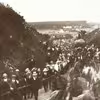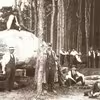Reunion 1920-2020
- A century of Reunification in Danish archives
In 2020, we can celebrate one of the most significant events in modern Danish history. Then it will be exactly 100 years since the population of Northern Schleswig voted in a plebiscite to return to Denmark from which it had been separated since the German conquest in 1864. We will come to hear a great deal more about this event in the near future, and this gives us a good opportunity to dive again into the local- and town archive collections.
Reunification was in no way only a Southern Jutland phenomenon. The fate of Southern Jutland occupied the thoughts of many Danes, not least at the outbreak of the First World War when young men from Southern Jutland were forced to go to war on behalf of Germany (while Denmark itself remained neutral). Throughout Denmark, societies devoted to the Southern Jutland cause were established, and when Reunification became a reality, every district with respect for itself had to have a Reunification stone or monument.
As the images (B 9096 & B 9100) from Odsherred Local Archive show, a Reunification monument could be quite sizeable, and both its transportation and establishment were events that attracted a huge number of spectators. And here we are in a northern Zealand area – faraway from Southern Jutland and the Kongeå river (that formed the Danish-German border from 1864 to 1920). The Reunification was something that mattered to all Danes throughout the land.
A simple free text search on arkiv.dk for "Genforening", the term for Reunification in Danish, gives no less than 3,687 hits. A search for ”Sønderjysk Forening”, the Danish term for the Southern Jutland Association, gives 562 hits. As geographically, the search results are spread throughout the country, it makes sense to look into whether or not something similar can be found for the area in Denmark from where your ancestors originated or the area that may interest you for other reasons.


